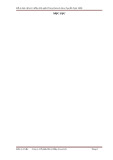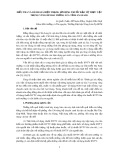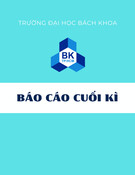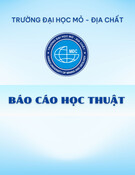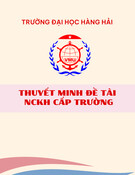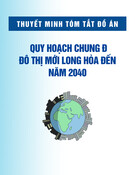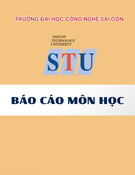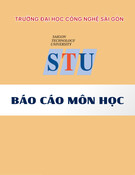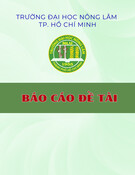
COM M E N TAR Y Open Access
Hybrid approach of ventricular assist device and
autologous bone marrow stem cells implantation
in end-stage ischemic heart failure enhances
myocardial reperfusion
Kyriakos Anastasiadis
1
, Polychronis Antonitsis
1*
, Helena Argiriadou
1
, Georgios Koliakos
2
, Argyrios Doumas
3
,
Andre Khayat
4
, Christos Papakonstantinou
1
, Stephen Westaby
5
Abstract
We challenge the hypothesis of enhanced myocardial reperfusion after implanting a left ventricular assist device
together with bone marrow mononuclear stem cells in patients with end-stage ischemic cardiomyopathy.
Irreversible myocardial loss observed in ischemic cardiomyopathy leads to progressive cardiac remodelling and
dysfunction through a complex neurohormonal cascade. New generation assist devices promote myocardial
recovery only in patients with dilated or peripartum cardiomyopathy. In the setting of diffuse myocardial ischemia
not amenable to revascularization, native myocardial recovery has not been observed after implantation of an
assist device as destination therapy. The hybrid approach of implanting autologous bone marrow stem cells during
assist device implantation may eventually improve native cardiac function, which may be associated with a better
prognosis eventually ameliorating the need for subsequent heart transplantation. The aforementioned hypothesis
has to be tested with well-designed prospective multicentre studies.
Introduction
Left ventricular assist devices (LVADs) are increasingly
used as “bridge to transplantation”in patients with end-
stage heart failure (HF) or more recently as destination
therapy in non-transplant candidates. Encouraging
results with LVADs as a “bridge to recovery”have been
reported from the Berlin group in patients with idio-
pathic dilated cardiomyopathy (IDCM) [1] and by
Simon and colleagues in patients with peripartum cardi-
omyopathy and acute myocarditis [2]. Combination
therapy utilising LVADs and drug therapy, as reported
by the Harefield group, has been successfully tested in
non-ischemic HF patients [3]. However, myocardial
recovery after mechanical support rarely occurs in the
severely failing ischemic heart [2]. Ischemic cardiomyo-
pathy (ICM) has the distinctiveness of irreversible myo-
cardial damage with scar tissue formation and mainly
impaired perfusion of the remaining viable myocardium.
Myocardial remodelling process encompasses structural
and molecular changes within the viable myocardium
resulting from activation of mechanical, neurohormonal,
and humoral reflex cascades [4]. This complex process
leads to progressive changes in ventricular size, shape,
and function related to cardiomyocyte hypertrophy, loss
of myocytes (necrosis and apoptosis), and increased
interstitial fibrosis [5].
Hibernation plays a key role in patients with coronary
artery disease (CAD). Rahimtoola first described the
condition of chronic sustained abnormal contraction in
patients who have CAD which is reversible with revas-
cularization and it is attributable to chronic underperfu-
sion as myocardial hibernation [6]. Alterations in energy
metabolism, energy depletion, and down-regulation of
energy turnover in the hibernating myocardium trigger
and maintain contractile dysfunction, continuous tissue
degeneration, and cardiomyocyte loss [7]. In this setting
myocardial revascularization offers the potential for
enhanced prognosis.
* Correspondence: antonits@otenet.gr
1
Department of Cardiothoracic Surgery, AHEPA Hospital, Thessaloniki, Greece
Full list of author information is available at the end of the article
Anastasiadis et al.Journal of Translational Medicine 2011, 9:12
http://www.translational-medicine.com/content/9/1/12
© 2011 Anastasiadis et al; licensee BioMed Central Ltd. This is an Open Access article distributed under the terms of the Creative
Commons Attribution License (http://creativecommons.org/licenses/by/2.0), which permits unrestricted use, distribution, and
reproduction in any medium, provided the original work is properly cited.

Chronic ischemic heart failure epidemic. Emergence of
“destination therapy”
It is estimated that 6-10% of people over the age of 65
suffer from symptomatic HF in developed countries. In
the USA and UK there are about 25,000 and 12,000
patients, respectively, aged less than 65 years, with
severely symptomatic New York Heart Association
(NYHA) class IV heart failure [8]. A meta-analysis per-
formed by Gheorghiade and colleagues on 13 multicen-
ter HF treatment trials, involving over 20,000 patients,
revealed that CAD was the underlying aetiology in
almost 70% of patients [9].
The prognosis for patients with chronic ischemic left
ventricular (LV) dysfunction is poor, despite advances in
pharmacological management. With only 2000 donor
hearts available annually in the USA and 150 in the UK,
LVADs provide an “off-the-shelf”solution for patients
with end-stage ICM ineligible for transplant or for those
wishing to avoid immunosuppression [10]. Use of axial-
flow LVADs in large cohorts of patients deemed unsui-
table for transplantation offers promising results in
terms of symptomatic relief, morbidity, and mortality
rates [11]. Mechanically supported hearts also demon-
strate improved intrinsic myocardial contractile proper-
ties [12]. Regarding ICM, LVAD support cannot lead to
repopulation of the infarcted tissue with contracting car-
diomyocytes. This fact could explain the inability to
wean mechanical support in patients with ICM [2].
Induction of molecular and cellular changes in the
failing myocardium has been observed with the use of
LVADs [13]. In an attempt to reperfuse and improve
contractility to terminally ischemic myocardium we have
employed a hybrid approach implanting a long-term
LVAD along with injecting directly autologous bone
marrow mononuclear stem cells (BMSCs) into the
hibernating myocardium. Our aim is to enhance native
myocardial recovery with the use of stem cells while the
heart is off-loaded with the assist device.
Our initial experience
We challenged this hybrid approach in two severely
symptomatic patients suffering from ICM who were
hospitalized due to recurrent pulmonary oedema on
minimal effort requiring intermittent inotropic support
(INTERMACS level 3). They were both considered ineli-
gible for heart transplantation due to severe co-morbid-
ities. Autologous BMSCs were collected from bilateral
anterior iliac crests during the same anaesthetic for
device implantation and treated as previously described.
A Jarvik 2000 axial-flow pump with skull pedestal power
delivery was implanted for long-term mechanical circu-
latory support (Figure 1). A stem cells injectate includ-
ing a mixed population of endothelial progenitor cells
(CD133
+
), haematopoietic stem cells (CD34
+
), and
mesenchymal stem cells (CD105
+
) was administered at
pre-defined myocardial territories designated as hiber-
nating myocardium on preoperative radionuclide scinti-
graphy segmental mapping (Figure 2). Recovery was
uncomplicated. One patient who has completed a 12-
month follow-up period is on NYHA I clinical status,
while thallium scintigraphy showed functional improve-
ment of the myocardium which could be attributed to
improved reperfusion of the targeted tissue supported
with autologous stem cell implantation. Current evi-
dence on myocardial perfusion after long-term mechani-
cal circulatory support indicates that no significant
change in relative myocardial perfusion should be
expected with increasing LVAD support, mainly due to
cardiac autoregulatory mechanism. Therefore, trans-
planted stem cells provide a potential angiogenic source
that could counteract this effect [14].
Role of stem cell therapy in ischemic heart failure
Ischemic heart disease remains a major health care chal-
lenge, and progenitor cell-based therapy holds potential
for treating the spectrum of myocardial ischemia. Cur-
rent therapy for HF is based on the traditional belief
that the heart is unable to generate new cardiomyocytes
Figure 1 A full range of cardiac support technology.Theplain
chest x-ray shows a Jarvik pump in the apex of the left ventricle
with power cable passing through the neck to the skull pedestal.
There is an implantable cardio-defibrillator and dual chamber
pacemaker with additional wire for cardiac resynchronisation
therapy. There are drug eluting stents in the left coronary artery.
Bone marrow stem cells now add a further dimension to supportive
therapy.
Anastasiadis et al.Journal of Translational Medicine 2011, 9:12
http://www.translational-medicine.com/content/9/1/12
Page 2 of 5

to replace failing or dying ones, but instead adapts to
new stresses by myocyte hypertrophy and cardiac remo-
delling. Replacement of scared tissue and regeneration
of viable myocardium remains a challenging target of
cell transplantation therapy. However, myocardial regen-
eration in human has not yet been identified. Even
though Orlic D, et al. reported that the injected bone
marrow (BM) stem cells differentiated in a mouse myo-
cardial infarction model into cardiomyocytes that
reduced infarct size and improved myocardial function
[15], Murry C, et al. showed that the injected BM stem
cells very rarely, if ever, do they differentiate into cardio-
myocytes [16]. Even though recent studies have chal-
lenged this conventional view by demonstrating some
degree of myocardial regeneration from the native heart
tissue, there is a diverse implication of regeneration
among scientists [17]. Research focused on the mechan-
ism of action of stem cells in the ischemic myocardial
environment revealed that cardiac repair is promoted
through paracrine activity, cell fusion, passive mechani-
cal effects, and stimulation of endogenous repair by resi-
dent cardiac stem cells (CSC) [18].
Human heart possesses a CSC pool which is reduced
in heart failure due to apoptosis, resulting in a reduced
number of functionally competent cells [17]. Therefore,
formation of myocytes and coronary vasculature cannot
counteract the chronic loss of functional cells and
vascular structures [5]. This negative balance between
myocardial regeneration and loss leads to progressive
ventricular dilation and deterioration of ventricular per-
formance. Myocardial regeneration after infarction could
be promoted through multifaceted cell-cell interactions
between the injected stem cells and resident CSC which
stimulate endogenous repair mechanisms [19].
Whilst originally intended to supply new functional
cardiomyocytes, it is now clear that implanted cells
respond to their environment by secreting cytokines and
growth factors which act both in an autocrine fashion
on the donor cells and exert paracrine effects on the
host cells [18]. This process stimulates vasculogenesis
and angiogenesis [20]. Moreover, transplanted BMSCs
exert anti-fibrotic effects through regulation of cardiac
fibroblasts proliferation and transcriptional down regula-
tion of collagen syntheses [21]. Traditional theory that
transplanted stem cells transform into new, functioning
cardiomyocytes improving cardiac performance is infer-
ential. Whether this therapy can achieve reverse remo-
delling and improve LVEF in the chronically ischemic
heart remains unclear. The low percentage of adult stem
cells in the bone marrow, low delivery efficiency, vari-
able engraftment, and poor survival of the implanted
cells in the host myocardium limit their potential for a
significant clinical benefit.
Hybrid combination therapy with LVAD and stem cells
implantation; enhanced myocardial reperfusion improves
prognosis
Attempts to improve cardiac performance in chronic
ischemic HF patients using cell transplantation and
mechanical assistance have been reported using autolo-
gous skeletal myoblasts and BMSCs [22,23]. Cell based
therapy already appears to improve longevity in IDCM
destination therapy patients [24]. Significant improve-
ment in native cardiac function has been observed early
after LVADs implantation attributed mainly to ventricu-
lar unloading [25]. Theoretically, LVAD unloading could
reduce stem cell attrition rate by greatly reducing LV
wall tension and improving myocardial perfusion [4].
Thus, whilst the blood pump provides early sympto-
matic improvement, stem cells may eventually provide
the synergistic benefit of improving ventricular function
through vasculogenesis and angiogenesis. An important
finding is that over time native cardiac function deterio-
rated, despite histologic improvement [25]. Cell trans-
plantation provides a promising tool in a strategy
targeted at preserving improved native cardiac function
during LVADs support over the long-term. This could
translate in an increased potential for myocardial recov-
ery leading to a survival benefit.
In order to test the hypothesis of myocardial reperfu-
sion with this hybrid approach, detailed myocardial
Figure 2 Intraoperative view showing clinical application of
stem cells into the failing heart with multiple targeted
injections following device insertion. Note the outflow graft (1)
connected to the device (2) which has been implanted into the left
ventricular apex (3). Stem cells injectate (4) was administered
through a small needle (5) into the myocardium.
Anastasiadis et al.Journal of Translational Medicine 2011, 9:12
http://www.translational-medicine.com/content/9/1/12
Page 3 of 5

segmental viability studies as well as LV contraction
analysis are essential to establish the efficacy of the
method. Since the net “healing”capacity of BMSCs is
difficult to determine, imaging of transplanted stem cells
is crucial in order to investigate the attitude of the
engrafted stem cells to the hosting myocardium [26].
The number of treated patients with the combined
approach so far is limited and current evidence comes
from small cohort studies or case reports that lack ran-
domization and comparison with a control group.
Another major drawback in elucidating the role of stem
cell therapy in HF is that each cell-based study uses a
unique protocol regarding the optimal cell type, the
number of cells to be delivered, and the most suitable
route for cell delivery. Design of a large multicenter ran-
domised controlled trial with a standardized protocol is
imperative in order to assess the safety and efficacy of
the proposed hybrid approach in end-stage ICM.
Conclusions
Although cellular recovery and improvement in ventricu-
lar function are evident during LVAD support in non-
ischemic cardiomyopathy, the degree of cardiac recovery
is limited in patients with ICM. Implantation of stem
cells to promote myocardial perfusion during mechanical
support in end-stage ICM may eventually provide a rea-
listic alternative to cardiac transplantation allowing
scarce donor hearts to be used for more complex cardiac
defects. This hypothesis has to be tested through further
well-designed randomized controlled studies.
Author details
1
Department of Cardiothoracic Surgery, AHEPA Hospital, Thessaloniki, Greece.
2
Laboratory of Medical Biochemistry, Aristotle University, Thessaloniki, Greece.
3
Nuclear Medicine Department, Aristotle University, Thessaloniki, Greece.
4
Department of Cardiothoracic Surgery, Caen Hospital, Cedex, France.
5
Department of Cardiothoracic Surgery, John Radcliffe Hospital, Oxford, UK.
Authors’contributions
KA Conception and design, provision of patients, data analysis and
interpretation, manuscript writing. PA Conception and design, data analysis
and interpretation, manuscript writing. HA Data analysis and interpretation.
GK Collection and assembly of data. AD Collection and assembly of data. AK
Data analysis and interpretation, collection and assembly of data. CP
Conception and design, data analysis and interpretation. SW Conception and
design, data analysis and interpretation, manuscript writing. All authors read
and approved the final manuscript.
Competing interests
The authors declare that they have no competing interests.
Received: 9 November 2010 Accepted: 19 January 2011
Published: 19 January 2011
References
1. Hetzer R, Muller JH, Weng Y, Meyer R, Dandel M: Bridging-to-recovery. Ann
Thorac Surg 2001, 71:S109-113.
2. Simon MA, Kormos RL, Murali S, Nair P, Hefernan M, Gorcsan J, Winowich S,
McNamara DM: Myocardial recovery using ventricular assist devices.
Prevalence, clinical characteristics and outcomes. Circulation 2005,
112(Suppl):I32-36.
3. Birks EJ, Tansley PD, Hardy J, George RS, Bowles CT, Burke M, Banner NR,
Khaghani A, Yacoub MH: Left ventricular assist device and drug therapy
for the reversal of heart failure. N Engl J Med 2006, 355:1873-1884.
4. Klotz S, Jan Danser AH, Burkhoff D: Impact of left ventricular assist device
(LVAD) support on the cardiac reverse remodeling process. Prog Biophys
Mol Biol 2008, 97:479-496.
5. von Harsdorf R, Poole-Wilson PA, Dietz R: Regenative capacity of the
myocardium: implications for treatment of heart failure. Lancet 2004,
363:1306-1313.
6. Rahimtoola SH: The hibernating myocardium. Am Heart J 1989,
117:211-221.
7. Elsasser A, Muller KD, Skwara W, Bode C, Kubler W, Vogt AM: Severe energy
deprivation of human hibernating myocardium as possible common
pathomechanism of contractile dysfunction, structural degeneration and
cell death. J Am Coll Cardiol 2002, 39:1189-1198.
8. McMurray JV, Pfeffer MA: Heart failure. Lancet 2005, 365:1877-1889.
9. Gheorghiade M, Bonow RO: Chronic heart failure in the United States: a
manifestation of coronary artery disease. Circulation 1998, 97:282-289.
10. Westaby S: Advanced heart failure-an “off-the-shelf”solution? Lancet
2008, 371:1898-1900.
11. Westaby S, Siegenthaler M, Beyersdorf F, Massetti M, Pepper J, Khayat A,
Hetzer R, Frazier OH: Destination therapy with a rotary blood pump and
novel power delivery. Eur J Cardiothorac Surg 2010, 37:350-356.
12. Soppa GK, Barton PJ, Terraciano CM, Yacoub MH: Left ventricular assist
device-induced molecular changes in the failing myocardium. Curr Opin
Cardiol 2008, 23:206-218.
13. Jahanyar J, Youker KA, Torre-Amione G, Koerner MM, Bruckner B, Noon GP,
Loebe M: Increased expression of stem cell factor and its receptor after
left ventricular assist device support: A potential novel target for
therapeutic interventions in heart failure. J Heart Lung Transplant 2008,
27:701-9.
14. Letsou GV, Sdringola S, Gregoric ID, Patel V, Myers TV, Delgado RM,
Frazier OH: Myocardial perfusion as assessed by positron emission
tomography during long-term mechanical circulatory support. Congest
Heart Fail 2006, 12:69-74.
15. Orlic D, Kajstura J, Chimenti S, Jakoniuk I, Anderson SM, Li B, Pickel J,
McKay R, Nadal-Ginard B, Bodine DM, Leri A, Anversa P: Bone marrow cells
regenerate infarcted myocardium. Nature 2001, 410:701-705.
16. Murry CE, Soonpaa MH, Reinecke H, Nakajima H, Nakajima HO, Rubart M,
Pasumarthi KB, Virag JI, Bartelmez SH, Poppa V, Bradford G, Dowell JD,
Williams DA, Field LJ: Haematopoietic stem cells do not transdifferentiate
into cardiac myocytes in myocardial infarcts. Nature 2004, 428:664-668.
17. Urbanek K, Torella D, Sheikh F, De Angelis A, Nurzynska D, Silvestri F,
Beltrami CA, Bussani R, Beltrami AP, Quaini F, Bolli R, Leri A, Kajstura J,
Anversa P: Myocardial regeneration by activation of multipotent cardiac
stem cells in ischemic heart failure. Proc Natl Acad Sci USA 2005,
102:8692-8697.
18. Fedak PW: Paracrine effects of cell transplantation: Modifying ventricular
remodeling in the failing heart. Semin Thorac Cardiovasc Surg 2008,
20:87-93.
19. Mazhari R, Hare JM: Mechanisms of action of mesenchymal stem cells in
cardiac repair: potential influences on the cardiac stem cell niche. Nat
Clin Pract Cardiovasc Med 2007, 4(Suppl):S21-26.
20. Kinnaird T, Stabile E, Burnett MS, Shou M, Lee CW, Barr S, Fuchs S,
Epstein SE: Local delivery of marrow-derived stromal cells augments
collateral perfusion through paracrine mechanisms. Circulation 2004,
109:1543-1549.
21. Ohnishi S, Sumiyoshi H, Kitamura S, Nagaya N: Mesenchymal stem cells
attenuate cardiac fibroblast proliferation and collagen synthesis through
paracrine actions. FEBS Lett 2007, 581:3961-3966.
22. Miyagawa S, Matsumiya G, Funatsu T, Yoshitatsu M, Sekiya N, Fukui S,
Hoashi T, Hori M, Yoshikawa H, Kanakura Y, Ishikawa J, Aozasa K,
Kawaguchi N, Matsuura N, Myoui A, Matsuyama A, Ezoe S, Iida H,
Matsuda H, Sawa Y: Combined autologous cellular cardiomyoplasty using
skeletal myoblasts and bone marrow cells for human ischemic
cardiomyopathy with left ventricular assist system implantation: report
of a case. Surg Today 2009, 39:133-136.
23. Gojo S, Kyo S, Nishimura S, Komiyama N, Kawai N, Bessho M, Sato H, Asakura T,
Nishimura M, Ikebuchi K: Cardiac resurrection after bone-marrow-derived
Anastasiadis et al.Journal of Translational Medicine 2011, 9:12
http://www.translational-medicine.com/content/9/1/12
Page 4 of 5

mononuclear cell transplantation during left ventricular assist device
support. Ann Thorac Surg 2007, 83:661-662.
24. Nasseri BA, Kukucka M, Dandel M, Knosalla C, Potapov E, Lehmkuhl HB,
Meyer R, Ebell W, Stamm C, Hetzer R: Intramyocardial delivery of bone
marrow mononuclear cells and mechanical assist device implantation in
patients with end-stage cardiomyopathy. Cell Transplant 2007, 16:941-949.
25. Maybaum S, Mancini D, Xydas S, Starling RC, Aaronson K, Pagani FD,
Miller LW, Margulies K, McRee S, Frazier OH, Torre-Amione G, LVAD Working
Group: Cardiac improvement during mechanical circulatory support: a
prospective multicenter study of the LVAD Working Group. Circulation
2007, 115:2497-2505.
26. Beeres SL, Bengel FM, Bartunek J, Atsma DE, Hill JM, Vanderheyden M,
Penicka M, Schalij MJ, Wijns W, Bax JJ: Role of imaging in cardiac stem
cell therapy. J Am Coll Cardiol 2007, 49:1137-1148.
doi:10.1186/1479-5876-9-12
Cite this article as: Anastasiadis et al.: Hybrid approach of ventricular
assist device and autologous bone marrow stem cells implantation in
end-stage ischemic heart failure enhances myocardial reperfusion.
Journal of Translational Medicine 2011 9:12.
Submit your next manuscript to BioMed Central
and take full advantage of:
• Convenient online submission
• Thorough peer review
• No space constraints or color figure charges
• Immediate publication on acceptance
• Inclusion in PubMed, CAS, Scopus and Google Scholar
• Research which is freely available for redistribution
Submit your manuscript at
www.biomedcentral.com/submit
Anastasiadis et al.Journal of Translational Medicine 2011, 9:12
http://www.translational-medicine.com/content/9/1/12
Page 5 of 5

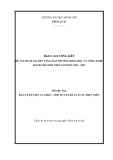
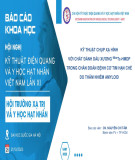

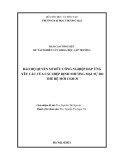
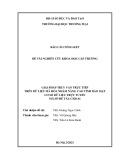
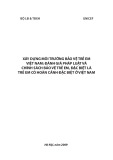
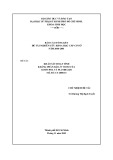
![Vaccine và ứng dụng: Bài tiểu luận [chuẩn SEO]](https://cdn.tailieu.vn/images/document/thumbnail/2016/20160519/3008140018/135x160/652005293.jpg)
